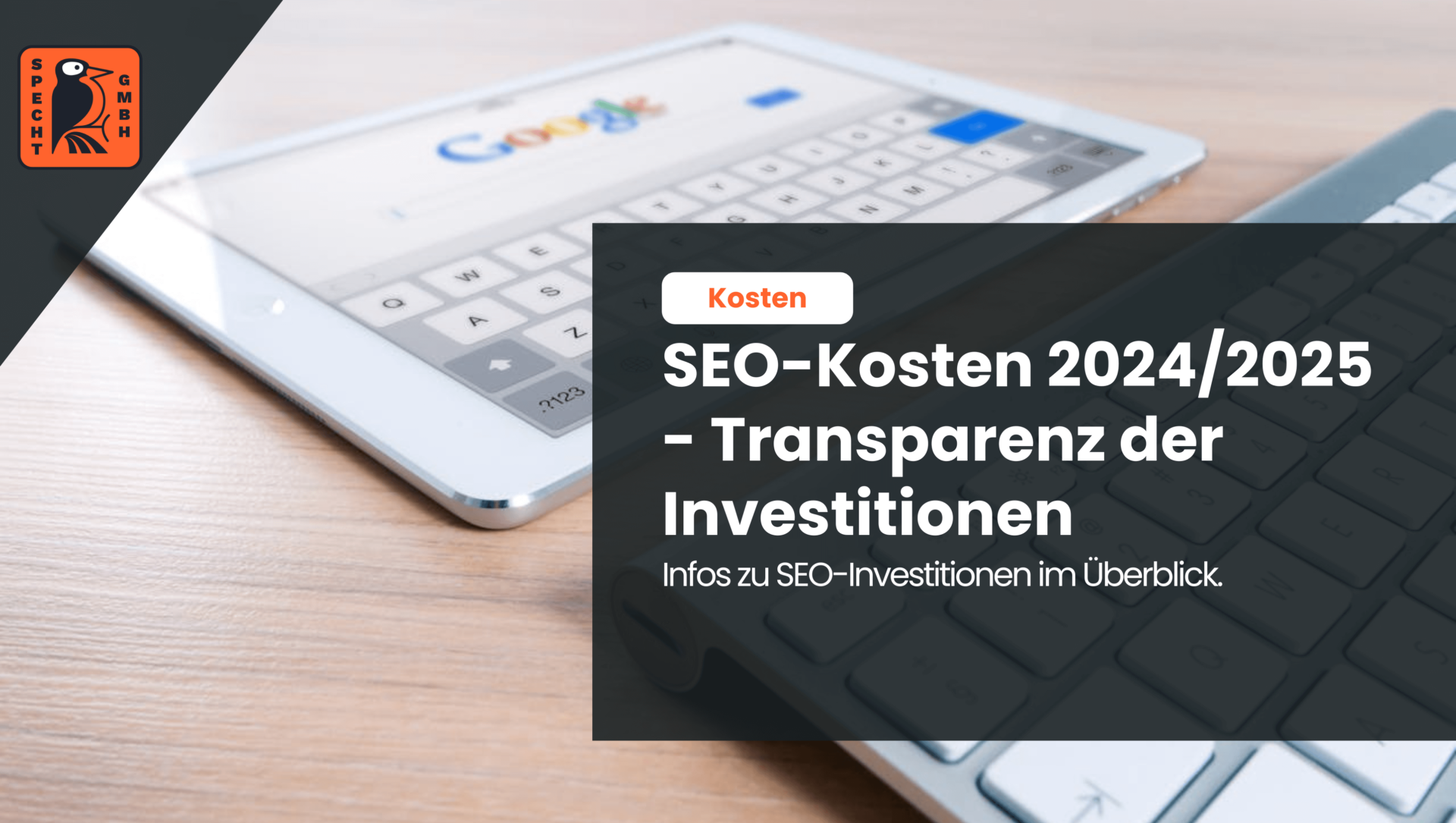In a nutshell: What is CTR manipulation and how does it work?
CTR manipulation is a widespread phenomenon in online marketing that often causes controversy and debate. But what exactly is behind this term? In this article, we will look at the basics of CTR manipulation, its role in online marketing, different methods of manipulation as well as ethical and legal aspects. We will also provide tips on how to prevent and detect CTR manipulation.
The basics of CTR manipulation
To better understand CTR manipulation, we first need to clarify the meaning of CTR. CTR stands for click-through rate and indicates how many times a user clicks on a link or ad after seeing it. A high CTR is very important for websites and advertisers as it is a measure of how effective an ad or search result is.
CTR manipulation refers to the targeted manipulation of this click-through rate in order to fake better results. This can be done in various ways, as we will learn later.
One example of CTR manipulation is so-called "click baiting". Lurid headlines or preview images are used to arouse users' curiosity and get them to click on the link. However, the content often does not meet the expectations raised by the headline.
Another method of CTR manipulation is "cloaking". This involves presenting different content to search engines than to users. The search engines see a relevant and high-quality page, while the users are redirected to a page with inferior content. This leads to a high CTR, as users click on the link due to the preview displayed, but quickly bounce when they see the actual content.
There is also the possibility of CTR manipulation through the use of bots. Here, automated programs are used to generate masses of clicks on a link. This artificially increases the CTR, which can lead to a better ranking in the search results.
However, CTR manipulation is not only of interest to advertisers, but also to search engine operators. They try to recognize and prevent manipulation in order to provide their users with relevant and high-quality results.
It is important to note that CTR manipulation is an unethical practice and is strictly prohibited by most search engines and ad networks. Websites caught manipulating CTR can be subject to penalties such as being banned from the advertising network or demoted in search results.
-
Free
SEO strategy meeting
In a free SEO strategy consultation, we uncover untapped potential and develop a strategy to make you more successful on Google.

- More organic visibility
- More organic visitors to your website
- More inquiries & sales
The role of CTR manipulation in online marketing
A fundamental aspect of CTR manipulation lies in its impact on search engine optimization(SEO). Search engines such as Google use CTR as one of the factors for determining the relevance and ranking of websites in the search results.
If a website has a high CTR, it is considered relevant and popular and therefore usually receives a higher ranking. By manipulating the CTR, website operators can try to artificially improve their ranking in the search results.
There are various methods to manipulate the CTR. One possibility is to use bots or automated programs to generate clicks on a website. Another method is the use of click farms, where people click on certain links in exchange for payment.
Importance of CTR for SEO
The CTR is an important indicator of the quality and relevance of a website. A high CTR indicates that the URL displayed meets the needs of users and is considered trustworthy. Search engines such as Google therefore rate websites with a high CTR positively and reward them with a better ranking in the search results.
However, it is important to note that the CTR alone is not enough to achieve a good ranking in the search results. Search engine algorithms also take into account other factors such as the quality of the content, the loading time of the website and the number of backlinks.
Effects of CTR manipulation on the ranking
CTR manipulation can lead to a better ranking in the short term. By generating clicks on a website or ad, this signals high relevance and popularity to search engines. As a result, the website is placed higher in the search results.
However, CTR manipulation can have negative effects in the long term. Search engine algorithms are becoming increasingly sophisticated and can detect manipulation. If manipulation is detected, this can lead to a devaluation of the website or even complete removal from the search results, which can have serious consequences for online marketing.
It is therefore advisable to focus on long-term and sustainable SEO strategies rather than short-term manipulation of the CTR. High-quality content, a user-friendly website and a good user experience are crucial for long-term success in online marketing.
- Do you know my SEO newsletter?
Register now and receive regular tips from the experts.
Methods of CTR manipulation
There are various methods to manipulate the click-through rate (CTR). One popular method is the use of clickbait. Lurid headlines or thumbnails are used to arouse the curiosity and interest of users and get them to click on the link.
Another method is the general manipulation of clicks through the use of automated bots or scripts. However, these automated clicks are not only ethically questionable, but also involve a high level of risk.
Use of clickbaits
Clickbait are enticing headlines or thumbnails designed to arouse the curiosity and attention of users. They often promise sensational or unusual information in order to increase the click rate.
Although clickbait can lead to an increased CTR in the short term, the long-term effects are negative. If users realize that a link or ad has misled them, they will trust the website or company less and may avoid it.
It is important that companies and website operators use ethical and transparent methods to attract the attention of users and increase their CTR. Clickbait can bring short-term success, but in the long term it damages a brand's reputation and credibility.
Automated clicks and their risks
The use of automated bots or scripts to generate clicks is one of the riskiest methods of manipulation. These bots can have negative consequences, as they violate the search engines' usage guidelines and can lead to legal consequences.
In addition, automated clicks can also affect the user experience as they distort statistics and analyses. This can lead to incorrect business decisions and affect users' trust in the information presented.
It is important that companies and website operators increase their CTR in a legal and ethical way. By providing high-quality content and improving the user experience, they can gain the trust of users and achieve long-term success.
There are also other methods to increase CTR, such as optimizing meta tags, using relevant keywords and improving page load time. These methods are more sustainable and have a long-term positive impact on the CTR of a website.
Ethics and legality of CTR manipulation
The ethics of CTR manipulation is a controversial topic. Some argue that it is a legitimate marketing strategy to generate attention and traffic. Others, however, see it as misleading users and a violation of the ethical principles of online marketing.
Controversy surrounding CTR manipulation
CTR manipulation has led to considerable controversy in the past. Many companies and advertisers have viewed the use of manipulation techniques as unfair competition and are calling for stricter controls and sanctions.
Legal aspects of CTR manipulation
The legal situation regarding CTR manipulation is complex. In some countries, certain manipulation methods are illegal and can lead to legal consequences. Nevertheless, laws vary from country to country and there are no uniform regulations on CTR manipulation.
It is important to note that CTR manipulation not only raises ethical and legal issues, but also has implications for the online advertising world. By manipulating the click-through rate, companies can outperform their competitors and better position their own products or services. This can lead to unfair competition and affect the credibility of online advertising.
Another aspect to consider when discussing CTR manipulation is the impact on the user experience. If users click on manipulated ads and then find that the advertised website does not meet their expectations, this can lead to frustration and disappointment. In the long term, this can affect users' trust in online advertising and marketing activities.
To curb CTR manipulation, some advertising platforms and search engines have developed algorithms and technologies to detect and filter suspicious click patterns. Nevertheless, manipulation techniques have become increasingly advanced and it is a constant challenge to keep up with the latest tactics.
It remains to be seen how the ethics and legality of CTR manipulation will evolve in the future. It is important that advertisers and online marketers are aware that manipulation techniques not only bring short-term benefits, but can also have long-term effects on the credibility and effectiveness of their marketing strategies.
Prevention and detection of CTR manipulation
To prevent CTR manipulation, it is important to recognize the manipulation and take appropriate countermeasures. Here are some tips that can help you:
How to recognize CTR manipulation
A sudden and unusual increase in clicks on a website or ad can be an indication of CTR manipulation. You should also look out for suspicious behavioral patterns such as a high number of clicks with a low dwell time.
Tips for avoiding CTR manipulation
To avoid CTR manipulation, it is important to ensure a transparent and relevant presentation of your website or ad. Avoid the use of clickbait and other misleading techniques. Ensure that your marketing strategy is based on quality and added value for users.
In addition, it is important to understand the risks of automated clicks and ensure that your website is protected against such manipulation. Regular checks and analyses can help to detect suspicious activity at an early stage.
CTR manipulation is a complex topic in online marketing. It is important to understand the effects and risks of these manipulation techniques in order to act ethically and legally correct both as a user and as an advertiser.
By being aware of CTR manipulation and advocating for transparent and honest marketing strategies, we can maintain the integrity of online marketing and increase user trust.
The prevention and detection of CTR manipulation is of great importance for companies active in online marketing. By manipulating the click-through rate, fraudulent actors can try to artificially push their own websites or ads and thus gain an unfair competitive advantage. It is therefore important that companies take appropriate measures to prevent and detect CTR manipulation at an early stage.
A first step in preventing CTR manipulation is to regularly monitor your own websites and ads and identify suspicious activity. This can be done, for example, by analyzing click patterns and dwell time on the website. If a large number of clicks suddenly occur that are not accompanied by an appropriate dwell time, this may be an indication of CTR manipulation.
To detect CTR manipulation, it is also important to pay attention to suspicious behavioral patterns. For example, if a high number of clicks come from a single IP address or if the clicks are generated by bots or automated scripts, this may indicate CTR manipulation.
To avoid CTR manipulation, companies should ensure that their marketing strategy is based on quality and added value for users. Misleading techniques such as clickbait should be avoided as they can affect user trust. Instead, companies should provide transparent and relevant content that meets users' needs.
It is also important to understand the risks of automated clicks and take appropriate protective measures. Companies should ensure that their websites and ads are protected from bots and other automated scripts. This can be done, for example, by implementing captchas or other security measures.
Preventing and detecting CTR manipulation requires continuous monitoring and analysis of your own websites and ads. Companies should regularly collect and analyze data on click patterns, dwell time and other relevant metrics in order to detect suspicious activity early and take appropriate countermeasures.
By actively addressing the issue of CTR manipulation and taking appropriate prevention and detection measures, companies can maintain the integrity of online marketing and strengthen user trust.






